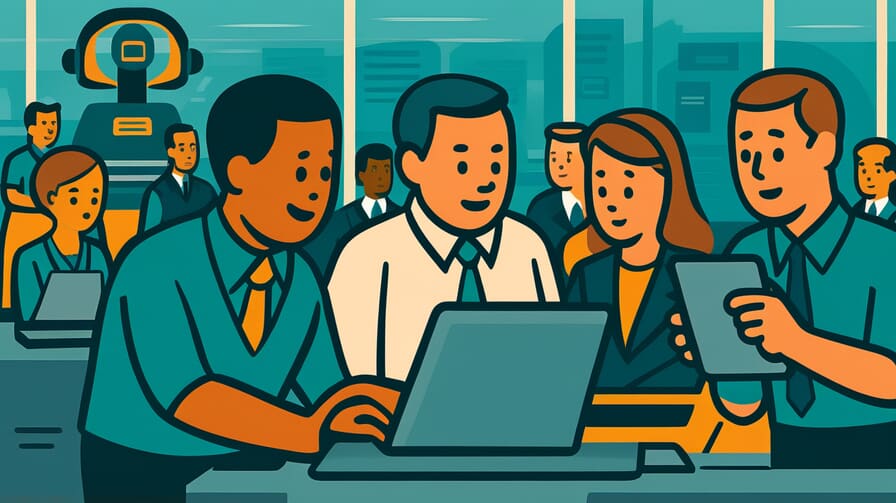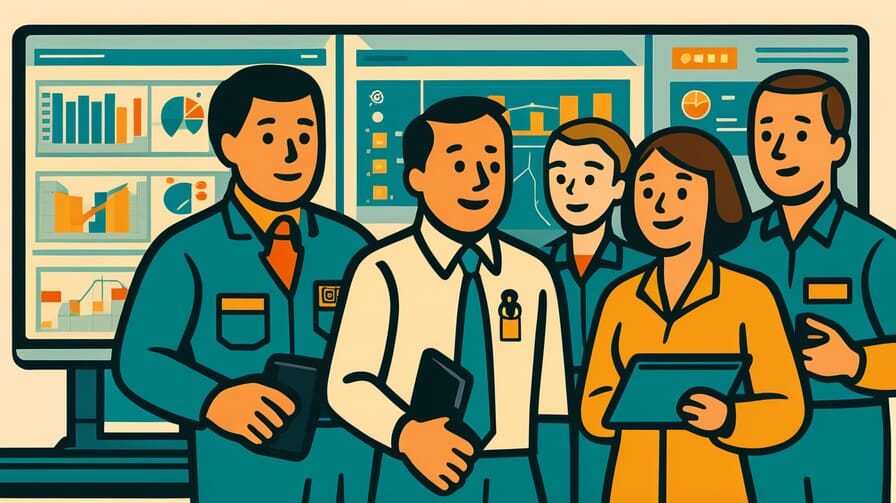[Disclaimer] This article is reconstructed based on information from external sources. Please verify the original source before referring to this content.
News Summary
The following content was published online. A translated summary is presented below. See the source for details.
A recent paper titled “Working with AI: Measuring the Occupational Implications of Generative AI” has sparked significant discussion about AI’s impact on the workforce. Published in July 2025 by Microsoft Research, the study analyzed 200,000 anonymized conversations between users and Microsoft Bing Copilot to understand how generative AI is currently used in work tasks. The research found that AI primarily assists with gathering information and writing, while frequently performing tasks like providing information, assistance, writing, teaching, and advising. The authors developed an AI applicability score for occupations, revealing that knowledge work roles in computer, mathematical, office, and administrative support fields have the highest potential for AI integration. Importantly, the study emphasizes that AI currently augments rather than fully automates jobs, with most occupations showing some AI applicability but none being fully automated. The paper cautions against interpreting AI applicability as job displacement, focusing instead on where AI might be useful rather than predicting job losses.
Source: Microsoft Research Blog
Our Commentary
Background and Context

The release of this research paper comes at a time of intense interest in artificial intelligence and its potential impact on the job market. As generative AI technologies like large language models become more sophisticated, there is growing concern about how they will reshape various industries and occupations. This study provides valuable insights into the current state of AI integration in the workforce, offering a data-driven perspective on the augmentation potential of AI across different job roles.
Expert Analysis
The Microsoft Research paper’s findings suggest that the impact of AI on jobs is more nuanced than often portrayed in public discourse. While AI shows high applicability in many knowledge-work fields, its role is primarily augmentative rather than fully automative. This aligns with other recent studies that indicate AI will likely lead to job transformation rather than wholesale elimination.
Key points:
- AI chatbots are most useful in research, writing, and communication tasks, particularly in office-based roles.
- There is a surprisingly weak correlation between AI applicability and wages or education levels.
- The study emphasizes the distinction between AI applicability and job displacement.
Additional Data and Fact Reinforcement
Recent projections and studies provide additional context to the Microsoft Research findings:
- The World Economic Forum projects that by 2025, AI and related technologies could create 11 million new jobs while displacing 9 million others.
- Veritone reports a 25.2% year-over-year increase in AI-related job openings in the U.S. as of Q1 2025.
- Goldman Sachs Research estimates that generative AI could raise labor productivity in developed markets by around 15%.
Related News
These findings come amid ongoing debates about AI regulation and its societal impact. Governments and organizations are increasingly focused on developing strategies to integrate AI while mitigating potential negative effects on employment. The research also relates to discussions about the need for upskilling and reskilling programs to prepare workers for an AI-augmented workplace.
Summary

The Microsoft Research paper provides valuable insights into AI’s current and potential impact on various occupations. While it highlights significant opportunities for AI integration in many fields, it also emphasizes the augmentative nature of AI rather than full automation. As AI continues to evolve, ongoing research and nuanced understanding of its implications for the workforce will be crucial for policymakers, businesses, and workers alike.


